12th IEA-IEF-OPEC Symposium on Energy Outlooks
Wednesday 16 February 2022, Riyadh, Saudi Arabia
Energy outlooks suggest alternative scenarios depending on the methodologies and assumptions used to estimate the course of demand, supply, and technology choices to reduce greenhouse gas emissions and increase affordable access.
The 12th IEA-IEF-OPEC Symposium on Energy Outlooks compared the outlooks prepared by the IEA and OPEC and other government organizations and market stakeholders, and exchanged points of view on their determinants and wider implications for energy security, market stability and sustainable and inclusive growth.
The symposium was divided into three sessions:
- Key Findings of the IEA and OPEC Outlooks and the IEF-RFF Comparative Analysis
- Energy Security and Market Stability: A Volatile New Normal?
- Transitions Pathfinder: Beyond Renewables and Electrification Alone
Guest Speakers
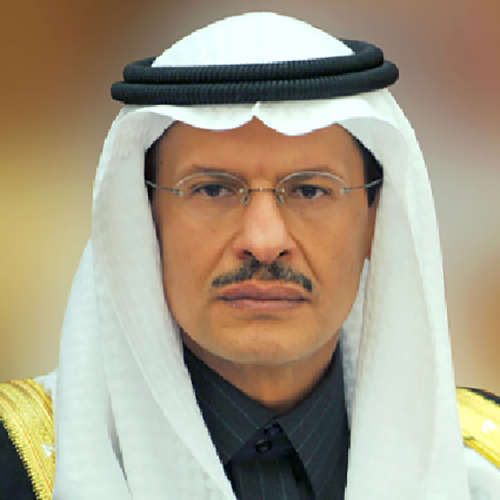
HRH Prince Abdulaziz bin Salman Al Saud
Minister of Energy, Saudi Arabia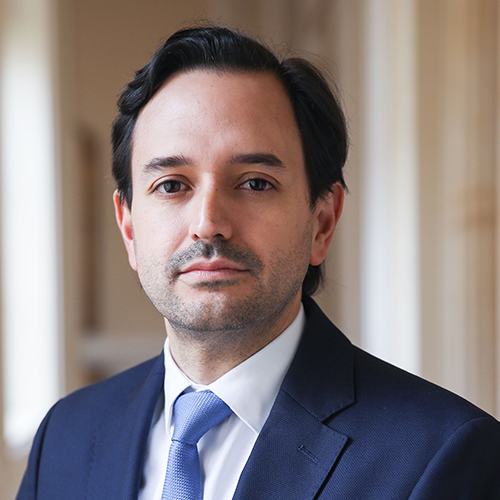
HE Diego Mesa
Minister of Mines and Energy, Colombia
HE Virgil-Daniel Popescu
Minister of Energy Romania
HE Bruno Jean-Richard Itoua
Minister of Hydrocarbons of Congo, OPEC President
Amos Hochstein
Senior Advisor for Energy Security, US Department of State
Joseph McMonigle
Secretary General, IEF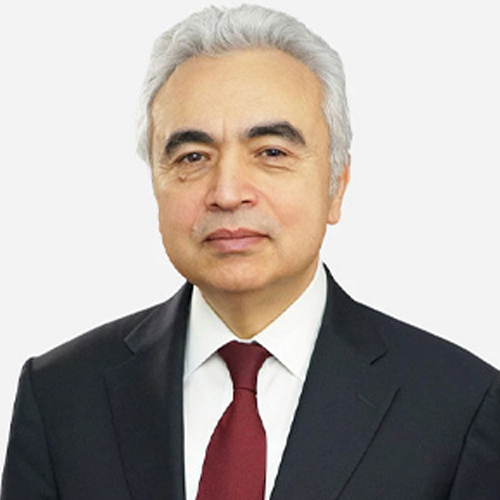
Fatih Birol
Executive Director, IEA
Rafael Mariano Grossi
Director General, IAEA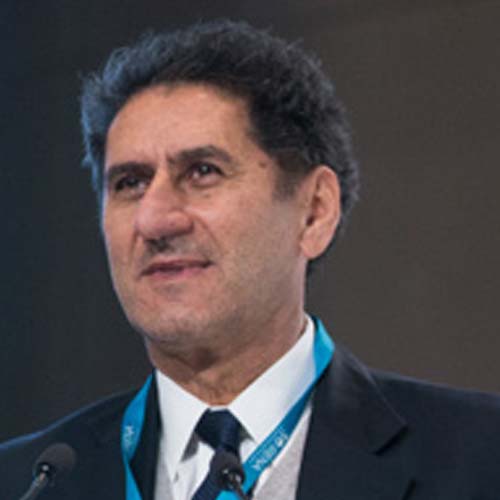
Francesco La Camera
Director General, IRENA
Mohamed Hamel
Secretary General, GECF
Numar Alfonso Blanco Bonilla
Executive Secretary, OLADE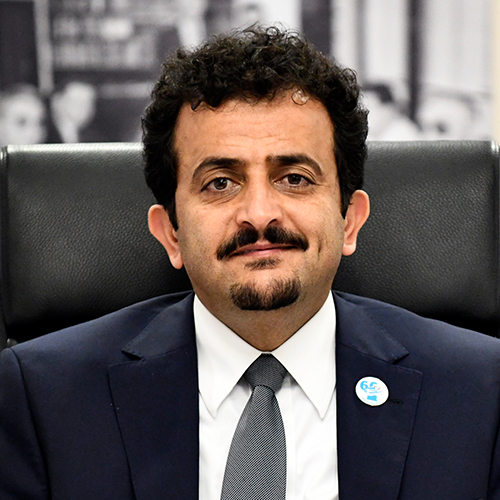
Ayed Al Qahtani
Director, Research Division, OPEC
Abderrezak Benyoucef
Head of the Energy Studies Department, OPEC
View presentation
Keisuke Sadamori
Director of the Office for Energy Markets and Security, IEA
View presentation
John Staub
Director, Office of Petroleum, Natural Gas & Biofuels Analysis, EIA
Richard Newell
President and CEO, Resources for the Future, RFF
View presentation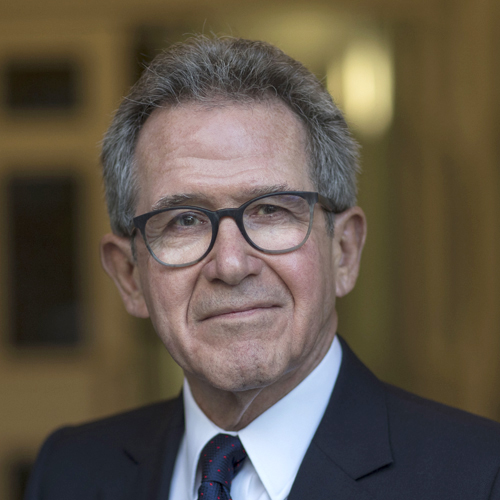
Lord John Browne
Chairman, Beyond NetZero,
Former CEO BP, Author of "Make, Think, Imagine, Engineering the Future of Civilization"
Carole Nakhle
Director and Founder, Crystol Energy
Robert McNally
President, Rapidan Energy
View presentation
Amrita Sen
Co-founder and Director of Research, Energy Aspects
View presentation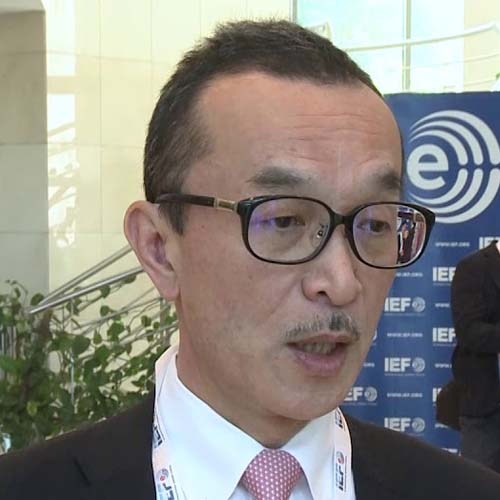
Ken Koyama
Managing Director, The Institute of Energy Economics, Japan (IEEJ)
View presentation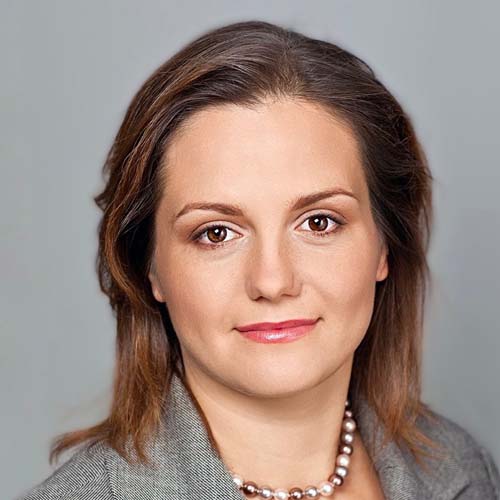
Irina Gayda
Director, Energy Centre Skolkovo Business School
Fahad Alajlan
President, King Abdullah Petroleum Studies and Research Center (KAPSARC)
Sama Bilbao y León
Director General, World Nuclear Association
Bjorn Otto Sverdrup
Chairman of the Executive Committee, Oil and Gas Climate Initiative (OGCI)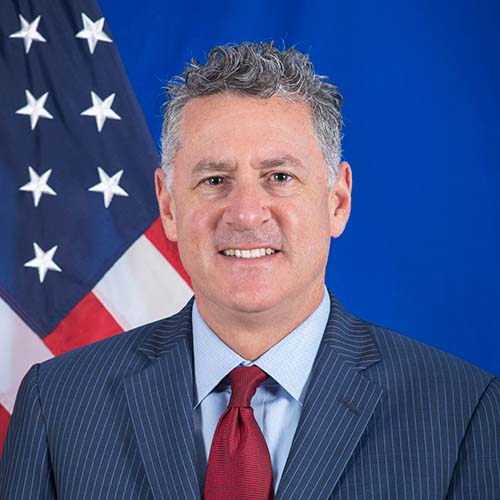
Harry Kamian
Senior Bureau Official, Bureau of Energy Resources, US Department of State
Andrea Stegher
Vice President, International Gas Union
Cosmin Ghita
Chief Executive Officer, SN Nuclearelectrica, Romania
View presentation
Luay Al Shurafa
President and Managing Director, GM Africa and Middle East
12th IEA-IEF-OPEC Outlooks Symposium Summary Record
This summary reflects the main outcomes of the Twelfth session of the IEA-IEF-OPEC Symposium on Energy Outlooks that the International Energy Forum (IEF) convenes yearly, in collaboration with the International Energy Agency (IEA), and the Organization of the Petroleum Exporting Countries (OPEC). The symposium was held in a hybrid format (virtually and in-person) on 16 February 2022 at the IEF Headquarters in Riyadh and convened close to 150 participants including ministers and other high-level industry and government representatives who gathered alongside leading experts to provide a range of insights.
IEF RFF Outlooks Comparison Report
Sessions were informed by the IEF-RFF Outlooks Comparisons Report which compares the key scenarios and underlying methodologies of most recent outlooks prepared by the IEA and OPEC and places these in the broader context of a growing number of such assessments issued by other organizations such as IRENA, the GECF, companies, national agencies, and research centers.
Key Observations
Key Points
Comparability Beyond Compare
- The impact of energy outlooks on policy and investment decisions and public views of energy trends and transitions continues to grow steadily since the UN Paris Agreement and Sustainable Development Goals were adopted in 2015 to achieve shared goals.
- Increasingly diverse outlook findings enrich the energy dialogue but also warrant greater scrutiny and alignment of methods, categories, baseline data, and time frames to improve comparability and deepen understanding.
- Though considerable advances have been made by both IEA and OPEC, IEF Ministers should ensure their Agencies accelerate work on aligning conventions and techniques that outlooks are based on and make all data public.
- Peer review will bolster the global energy dialogue and improve policy and investment decisions to address challenges regarding energy security, market stability and just and orderly transitions as called for by the G20 Leaders gathered under the Italian Presidency of Italy in Rome.
Long-Term Outlooks Highlights
Widening Gaps and Unprecedented Changes
- IEA's SDS, NZE, and APS, envision a world in which demand for all fossil fuels, including oil and other liquids, declines considerably in the coming decades. Many of these scenarios, including IEA's SDS and NZE, as well as Equinor Rebalance, project that global energy demand in 2050 will be below 2020 levels, reflecting a major change in the historical relationship between economic growth and energy demand growth.
- The annually growing “gap” in liquid demand scenarios between OPEC's High GDP Growth Case and IEA's NZE Scenario rises to 84.6 mb/d in 2045 reflecting growing uncertainty in respect of security of demand. When other scenarios are considered, the “gap” reaches about 105 mb/d between the highest scenario (EIA Reference) and lowest scenario (IRENA 1.5°C) by 2050.
Global Energy Mix
Oil
- In IEA and OPEC main scenarios, oil maintains its position as the leading primary energy source globally while IEA NZE is the only scenario where natural gas takes over this role. In OPEC's Reference Case oil slightly decreases from 30 percent in their 2020 baseline to 28 percent in 2045, while IEA STEPS reports a dip from 29 percent to 27 percent in the same period.
Gas
- In 2050, natural gas demand under IEA's STEPS scenario reaches 4192 mtoe while the OPEC Reference scenario projects 4267 mtoe in 2045, 26 percent and 28 percent over 2020 demand of 3323 mtoe, respectively. The projections from GECF RCS, IRENA Planned, and IEEJ Reference sit higher than these baseline policy scenarios, growing to reach 4810 mtoe, 4845 mtoe, and 4855 mtoe in 2050, respectively. Equinor's Reform has the lowest projection of mid-century natural gas demand of the baseline policy scenarios with 3840 mtoe.
- In the more ambitious and ”Paris-aligned scenarios”, natural gas demand flattens or declines in the coming decades. In IEA's APS, natural gas demand remains nearly level with 2020, sitting at 3182 mtoe in 2050. GECF ETS follows a similar trend before natural gas demand begins to dip beyond 2040. IEA SDS and IRENA 1.5°C scenarios fall significantly to 2035 mtoe and 1890 mtoe in 2050, but IEA NZE sees the largest decrease in natural gas demand to only 1450 mtoe.
Nuclear
- From 702 mtoe in 2020, nuclear demand under IEA's STEPS scenario gradually reaches 967 mtoe in 2050, while OPEC's Reference scenario projects 1095 mtoe in 2045. The Equinor Reform and GECF RCS scenarios fall between these two projections, reaching 998 and 1030 mtoe by 2050, respectively.
- Nuclear demand grows much more rapidly under climate and technology scenarios from these outlooks. In IEA's APS, nuclear demand increases to 1158 mtoe in 2050, a nearly 20% increase over the STEPS projection. The IEEJ ATS has a similarly large rise to 1399 mtoe in 2050. The IEA NZE scenario sees the most dramatic increase of nuclear demand in the period, to 1448 mtoe, nearly a 50 percent increase compared to IEA STEPS. Equinor's Rebalance lands just below IEA NZE with 1311 mtoe in nuclear energy demand by the half century. GECF ETS and IRENA 1.5-S lie slightly lower than other climate scenarios, reaching 889 and 928 mtoe in 2050.
Renewables
- For renewables that include solar, wind, hydropower, biomass, and other renewables, demand goes from 1636 mtoe in 2020 to reach 4598 under IEA's STEPS scenario in 2050, while OPEC's Reference scenario projects 4188 mtoe in 2045. GECF scenarios are all considerably lower. GECF RCS only projects 2769 mtoe by 2050. While GECF ETS and HS project 3174 mtoe and 2787 mtoe, respectively. IRENA Planned scenario lands higher at 4208 mtoe whereas Equinor's Reform is projected to reach 4978 mtoe.
- The IRENA 1.5°C scenario projects the highest renewables demand, at 10686 mtoe by 2050, more than a six-fold increase over IEA STEPS demand in 2020. The IEA NZE and IEA SDS scenarios reach the next highest levels at 8649 mtoe and 7558 mtoe mid-century. The APS scenario has still considerably higher demand than the STEPS scenario, with 5933 mtoe projected by 2050, a 29 percent increase over the STEPS projection. Equinor's Rebalance scenario sits lowest among climate policy scenarios with 2050 renewables demand of 5651 mtoe.
CCUS
- While many outlooks show a gradual acceleration into CCUS, GECF HS stands out with the most aggressive CCUS scenario, growing from 80 million metric tons (mmt) in 2025 to 3214 mmt in 2050. IEEJ ATS has a similarly robust projection of CCUS to reach 2128 mmt.
- Comparatively, central and some alternative climate scenarios project a slower deployment of CCUS, with the IEA APS, Equinor Reform, and IEA SDS modestly exceeding 500 mmt in 2050. Without additional policy to incentivize carbon capture, the IEA STEPS scenario keeps CCUS constant at less than 1 mmt for the entire period.
- Climate target scenarios mostly still follow a gradual build-up of CCUS, albeit with a greater rate of growth. IEA NZE grows to 1186 mmt of CCUS by 2050, while the Equinor Rebalance reaches 2000 mt.
Medium-term Outlooks Highlights
- While both IEA and OPEC project demand strong growth in the medium-term, OPEC has a slightly more ambitious expectation for demand growth emerging from the pandemic with a difference of 0.5 mb/d compared to the IEA in 2022. Forecasts converge in 2026 with IEA projecting global demand at 104.1 mb/d compared to OPEC's 104.4 mb/d. While IEA reduced its projections compared to last year, OPEC largely retains a similar outlook.
- Both organizations are relatively aligned in their outlooks for non-OECD countries where most demand growth is concentrated. However, estimates for OECD countries diverge in 2023 with OPEC reporting 46.6 mb/d compared to IEA's 45.8 mb/d but forecasts converge towards 2026.
- Both organizations offer different perspectives on the medium-term supply picture. While there is relative alignment on growth in 2022, OPEC projects greater growth from 2023 onwards punctuated with a 0.6 mb/d growth in 2026 versus a 0.2 mb/d decline reported by IEA.
- Much of this difference is owed to OPEC's more optimistic liquids supply growth forecasts in 2026 for Latin America, Middle East and Africa, and Europe and Eurasia. However, OPEC projects less growth in OECD Americas and OECD Europe compared to IEA and its own projections from last year. OPEC also projects greater non-OPEC growth by 1.2 mb/d between 2020-2026 compared to IEA's 0.7 mb/d with overall supply of 70 mb/d and 68 mb/d, respectively.
Short-term Outlooks Highlights
- As an outcome of the collaborative work on historical baseline data, the IEA, OPEC, and the US EIA oil demand and supply base year 2020 data is mutually consistent.
- The IEA, OPEC, and EIA estimated global liquids demand growth rates between 5.0 and 6.0 mb/d for 2021. OPEC estimated higher global liquids demand growth, mostly driven by a greater estimate of growth in non-OECD regions while the EIA consistently reported more non-OECD growth over the course of 2021. Liquids demand projections for 2022 show larger differences reflecting the elevated uncertainty related to impact of the continued COVID-19 pandemic.
- For 2021 IEA, OPEC, and EIA estimate non-OPEC liquid supply to increase by 0.7 mb/d, 0.7 mb/d, and 0.9 mb/d, respectively. Estimates for growth in 2022 are more aligned, with both the IEA, OPEC, and EIA estimating increases of around 3 mb/d. Notable differences emerge for the OECD Americas, with IEA projecting 0.36 mb/d and 0.48 mb/d in additional supplies relative to OPEC in 2021 and 2022, respectively. The EIA reports even higher estimates than IEA by 0.84 mb/d and .99 mb/d in 2021 and 2022 respectively. The Americas drive differences in the OECD category.
Highlights Videos
Speaker Presentations
- Abderrezak Benyoucef
Head of the Energy Studies Department, OPEC - Keisuke Sadamori
Director of the Office for Energy Markets and Security, IEA - Richard Newell
President and CEO, Resources for the Future, RFF - Robert McNally
President, Rapidan Energy - Amrita Sen
Co-founder and Director of Research, Energy Aspects - Ken Koyama
Managing Director, The Institute of Energy Economics, Japan (IEEJ) - Cosmin Ghita
Chief Executive Officer, SN Nuclearelectrica, Romania
Key Documents
Previous Symposia
- 11th IEA-IEF-OPEC Symposium on Energy Outlooks
17 February 2021, Riyadh, Saudi Arabia - 10th Anniversary Session of the IEA-IEF-OPEC Symposium on Energy Outlooks
19 February 2020, Riyadh, Saudi Arabia - 9th IEA-IEF-OPEC Symposium on Energy Outlooks
27 February 2019, Riyadh, Saudi Arabia - 8th IEA-IEF-OPEC Symposium on Energy Outlooks
14 February 2018, Riyadh, Saudi Arabia - 7th IEA-IEF-OPEC Symposium on Energy Outlooks
15 February 2017, Riyadh, Saudi Arabia - 6th IEA-IEF-OPEC Symposium on Energy Outlooks
16 February 2016, Riyadh, Saudi Arabia - 5th IEA-IEF-OPEC Symposium on Energy Outlooks
23 March 2015, Riyadh, Saudi Arabia - 4th IEA-IEF-OPEC Symposium on Energy Outlooks
22 January 2014, Riyadh, Saudi Arabia - 3rd IEA-IEF-OPEC Symposium on Energy Outlooks
22 January 2013, Riyadh, Saudi Arabia - 2nd IEA-IEF-OPEC Symposium on Energy Outlooks
23-24 January 2012, Riyadh, Saudi Arabia - 1st IEA-IEF-OPEC Symposium on Energy Outlooks
24 January 2011, Riyadh, Saudi Arabia






